Scientific name Tillandsia recurvata Rank Species | Subgenus Diaphoranthema Higher classification Tillandsia | |
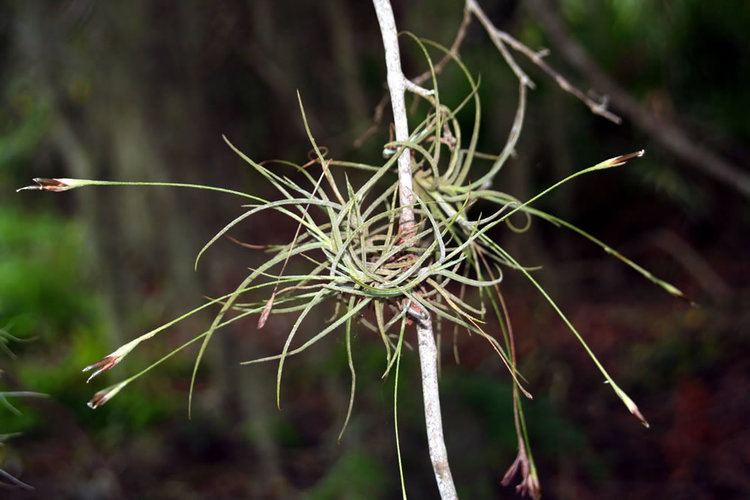 | ||
Similar Tillandsia, Bromeliads, Spanish moss, Tillandsia fasciculata, Ditassa | ||
Tillandsia recurvata top 13 facts
Tillandsia recurvata, commonly known as small ballmoss or ball moss, is a flowering plant (not a true moss) in the family Bromeliaceae that grows upon larger host plants. It grows well in areas with low light, little airflow, and high humidity, which is commonly provided by southern shade trees, often the southern live oak (Quercus virginiana). It is not a parasite like mistletoe, but an epiphyte like its relative Spanish moss.
Contents
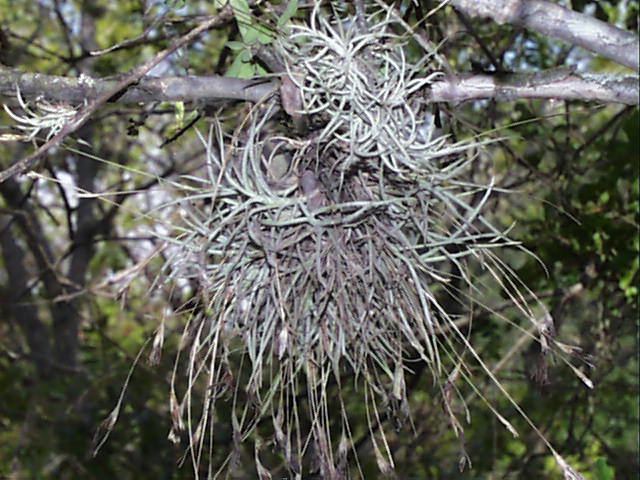
Tillandsia recurvata derives mainly physical support and not nutrition from its host; it photosynthesizes its own food, absorbing water that collects on its leaves. It obtains nitrogen from bacteria, and other minerals largely from blown dust. Though not a harmful parasite in the same sense as plants such as mistletoes that feed on the sap of the host, Ball Moss may compete with a host tree for sunlight and some nutrients, and by restricting available surface area for new branch sprouts; however, except on stressed host trees (e.g., in some urban settings) it rarely has a noticeable effect on growth or health.
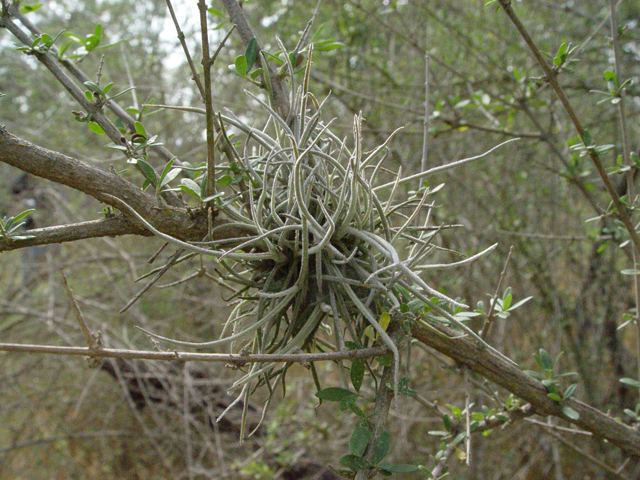
In habit, Tillandsia recurvata tends to form a spheroid ranging in size from a golf ball to a soccer ball. Most seedlings germinate on tiny branches and less often on vertical bark of tree hosts, which has been suggested to indicate that local spread of Ball Moss is mainly by seeds sprouting from bird droppings on stems of shrubs and trees. Rival authorities suggest that wind is the main agent of seed dispersal. Mature seeds have no apparent adhesive on the exterior, and very little nutrient supply to support sprouting, but, like many other epiphyte seeds, they are borne plentifully and are armed with fine, straight hairs that could well adhere to wet or clinging surfaces, such as rough bark. In fact, as shown in the accompanying photograph, they even grow plentifully on fences and telegraph wires, together with occasional other species.
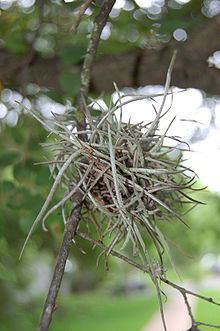
Ball Moss is sensitive to freezing, particularly when moist.
Ball Moss is indigenous to the warmer regions of the Americas; it ranges from the southern United States to northern Argentina and Chile. The northernmost limit of its natural occurrence is coastal Georgia (where it is listed as a State "Special Concern" species), although it has been introduced into coastal South Carolina on landscaping trees. It has been reported in nature from Georgia, Florida, Louisiana, Texas, Arizona, Mexico, most of Central and South America, and many of the islands in the West Indies.
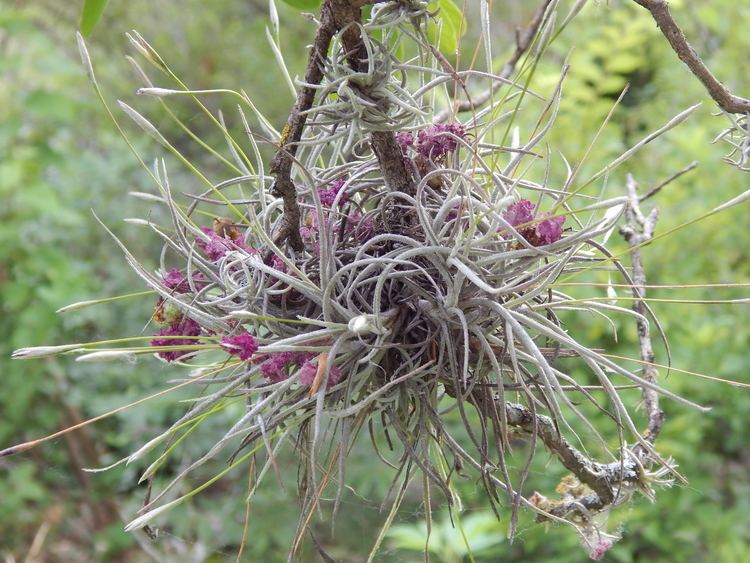
Tillandsia recurvata
Uses
Tillandsia recurvata can be used as animal fodder.
Medicinal
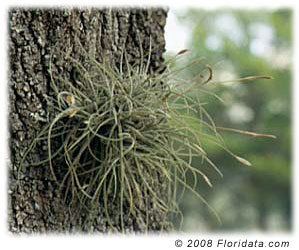
Ball Moss has shown significant anti-tumor and HIV/AIDS applications in vitro as well as in animal studies. Dr. Henry Lowe of Jamaica has applied for a US patent for a Ball Moss extract which induces tumorous cell death by apoptosis.
